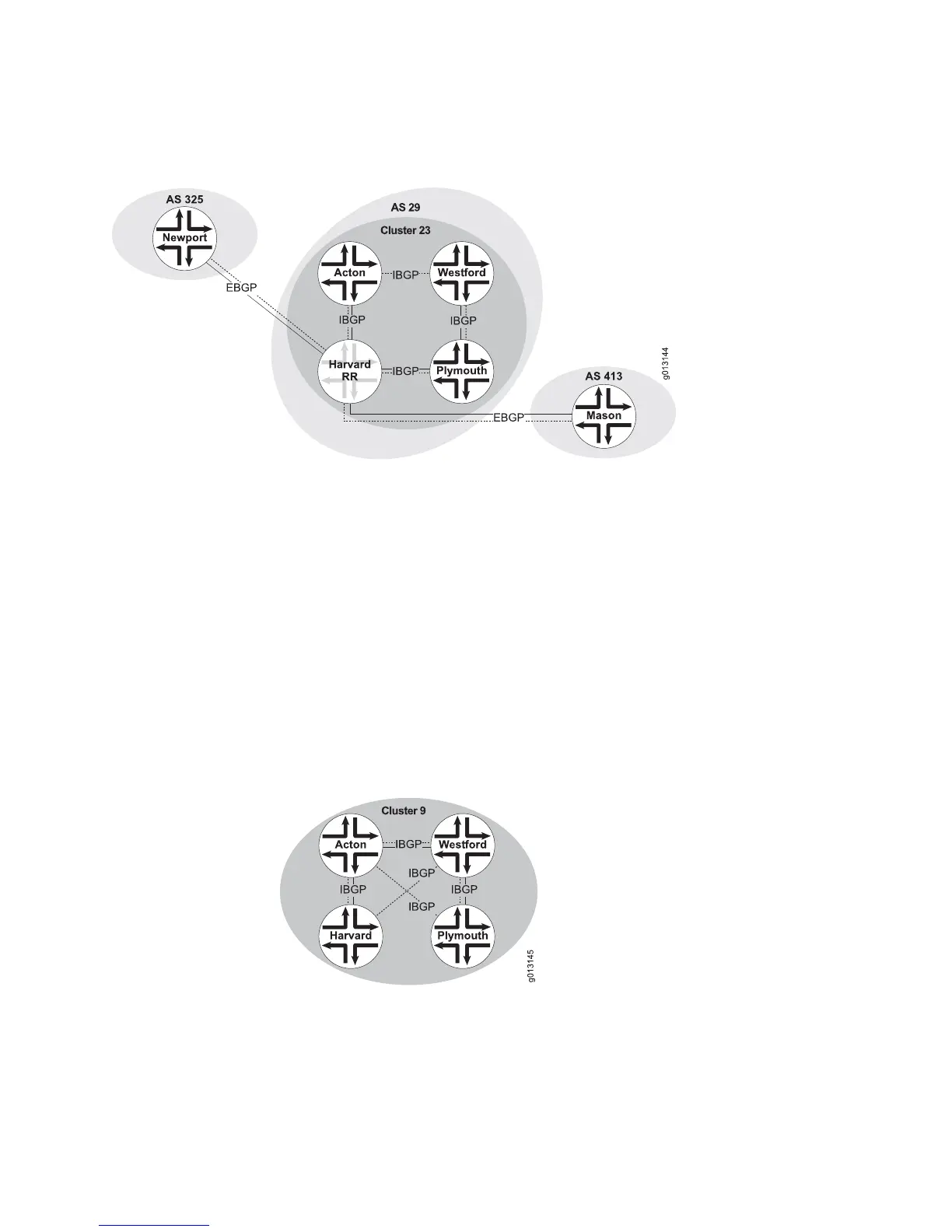Figure 43: Simple Route Reflection
Route Reflection and Redundancy
Reliability and redundancy are important issues when using route reflection because
the members of a cluster are not fully meshed. For example, if router Harvard in
Figure 43 on page 149 goes down, all of its clients are isolated from networks outside
the cluster. Having one or more redundant route reflectors in a cluster protects against
such an occurrence.
However, you cannot rely on logical redundancy alone. Consider the cluster shown
in Figure 44 on page 149. The operator has attempted to provide redundancy in
Cluster 9 by configuring two route reflectors, router Acton and router Westford.
Unfortunately, router Harvard is physically isolated if its link to router Acton goes
down, or if router Acton itself goes down. Similarly, router Plymouth is isolated if
any problems develop with router Westford.
Figure 44: Route Reflection: Logical Redundancy
In Figure 45 on page 150, the operator has added physical redundancy to the cluster
configuration. Now, loss of either one of the route reflectors does not isolate the
reflector clients.
Managing a Large-Scale AS ■ 149
Chapter 1: Configuring BGP Routing

